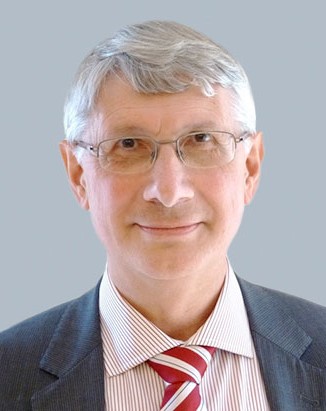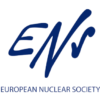Nuclear Energy And The European Energy Policy At The Crossroad…

Marc Deffrennes
The title of this short article can be understood in two ways: is it nuclear energy which is at the crossroad, or the European Energy Policy? In fact, both. The time has indeed come for a paradigm shift. The time has come to reboost the European nuclear energy policy.
The multifaceted crisis affecting the European people (climate, energy, economy, social) rings the bell. It is time for a shake-up, starting with a (re)definition of sustainability integrating and balancing the three pillars of a sound energy policy: environment protection AND economics AND security of supply. This translates into the need to have an energy mix which is, all together, Clean AND Affordable AND Reliable, providing energy when needed, in quantity and quality. Over the last decade the motto has been “green is sustainable and sustainable is green”. This is best illustrated by the choice of words: going from the Clean Planet for All to the Green Deal. The time of this too limited definition of sustainability is over. It is necessary to come back to the original Brundtland’s vision of sustainability and to put the wellbeing of the society at the centre of gravity of the three pillars. We will need a lot of energy, particularly electricity, and all low carbon energies need to be promoted, even more when they are affordable and reliable.
With this in mind, it is urgent to revitalize the role of nuclear energy in the European energy mix.
- Nuclear energy is clean; it is the most decarbonized way to produce electricity; it is safe (comparing factually the risks with those of other human activities); and solutions exist for the safe management of the small quantities of waste it generates.
- Nuclear energy is economic as shown by OECD studies (IEA and NEA). In particular, the NEA and MIT System Costs studies[1], going beyond the LCOE and integrating the costs imposed on the electricity system by the intermittency of renewables, show that, in a deeply carbon constrained world, going beyond a certain fraction of non-dispatchable intermittent renewables is not economically optimal. A rough figure is a limit of around 40% for the penetration of renewables in the electricity system in the European region.
- Nuclear energy is reliable, as the last 50 years of operation of the European nuclear fleet has shown. The load factors of PV solar panels (10%) and wind power (between 20% onshore and max 40% offshore) are nothing to compare.
The legal base to support this revitalisation of nuclear energy at the EU level exists: the Euratom Treaty is promoting the development and deployment of nuclear energy in the Union, and the Art 194.2 of the TFEU gives the full and sole right to the Member States to select their energy mix. Limiting this by using other policies, particularly green oriented environmental policies, is no longer acceptable. As one example, further defining, in the same move, decarbonisation targets and percentages of renewables at the EU level, so mixing a commendable objective with only one possible tool, should be avoided. Another example is the biased discussion on green versus low carbon hydrogen.
Beyond general policy documents, it is also necessary to review most of the implementation instruments developed in the last years, including the financing frameworks and mechanisms. The financing tools developed during the preparation of the MFF (InvestEU, Just Transition Fund…) were basically excluding nuclear energy. The CDA on the Taxonomy for sustainable financing contains, for nuclear energy, limitations which would need to be revisited. More recent instruments developed to cope with the economic impact of the COVID (Recovery Fund – Next Generation EU) and the gas supply crisis (REPowerEU, NZIA) continue to basically exclude nuclear energy. The mid-term review of the MFF should be the opportunity for the EU Institutions to correct this.
This would indeed be a paradigm shift. One can understand that it would not be an easy move at EU level, considering the respective responsibilities of the three Institutions and the well-known very divergent views of Member States when it comes to nuclear energy. But it is time to make the break, to put the well-being of the European citizens at the centre of the attention, better balancing the energy policy to support societal sustainability. Not doing it could have negative outcomes for the European Union we all need so much.
To help this move, the Commission should start to work, with the concerned stakeholders, on the preparation of a new PINC, to be ready for the instalment of the new College in 2024. It should start with a realistic analysis of the future energy needs at the EU level and, from there, study how nuclear energy, considering the full range of means (LTO of existing plants, new built Gen III large and/or SMRs, and later new built GEN IV large and/or SMRs, fuel cycle and waste management facilities), can contribute to filling these needs.
Marc Deffrennes (BNS Liaison Officer, Vice President INSC, Founder of weCARE[2])
[1] https://login.oecd-nea.org/upload/docs/application/pdf/2020-07/workshop_esr_8._the_costs_of_decarbonisation.pdf
Marc Deffrennes
Nuclear engineer with 10 years of experience in industry (Westinghouse) before joining the European Commission in 1991. During the 23 years as official, he worked on nuclear energy-related files (Euratom) in DG Energy, DG External Relations and DG Research. He joined the OECD Nuclear Energy Agency in 2014 as Senior Analyst on Innovation and Economics of nuclear energy. Retired in 2019, he is still active in diverse nuclear groups and societies, teaches in a high school, and is the founder of the weCARE alliance of 10 NGOs in 9 EU Member States promoting a very low carbon energy mix with an important contribution of nuclear energy.
